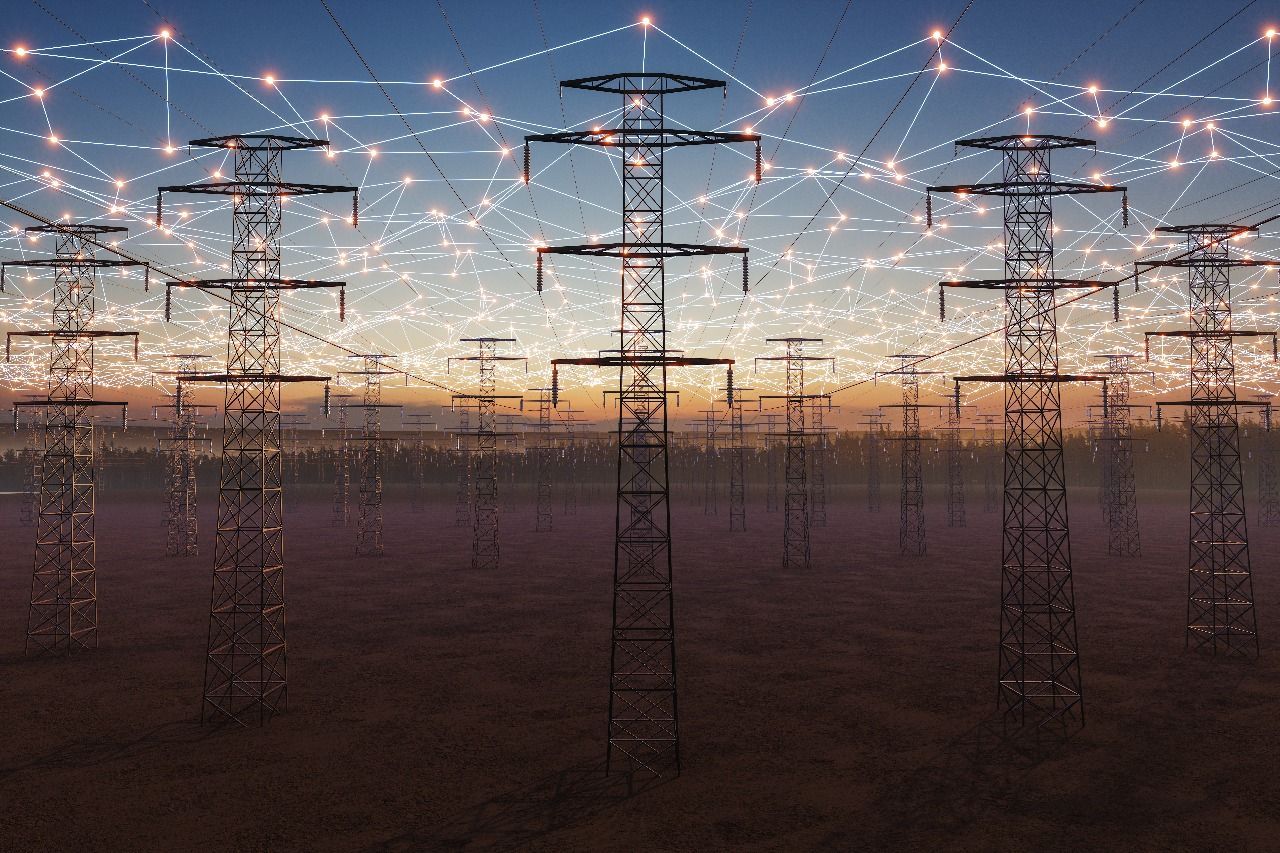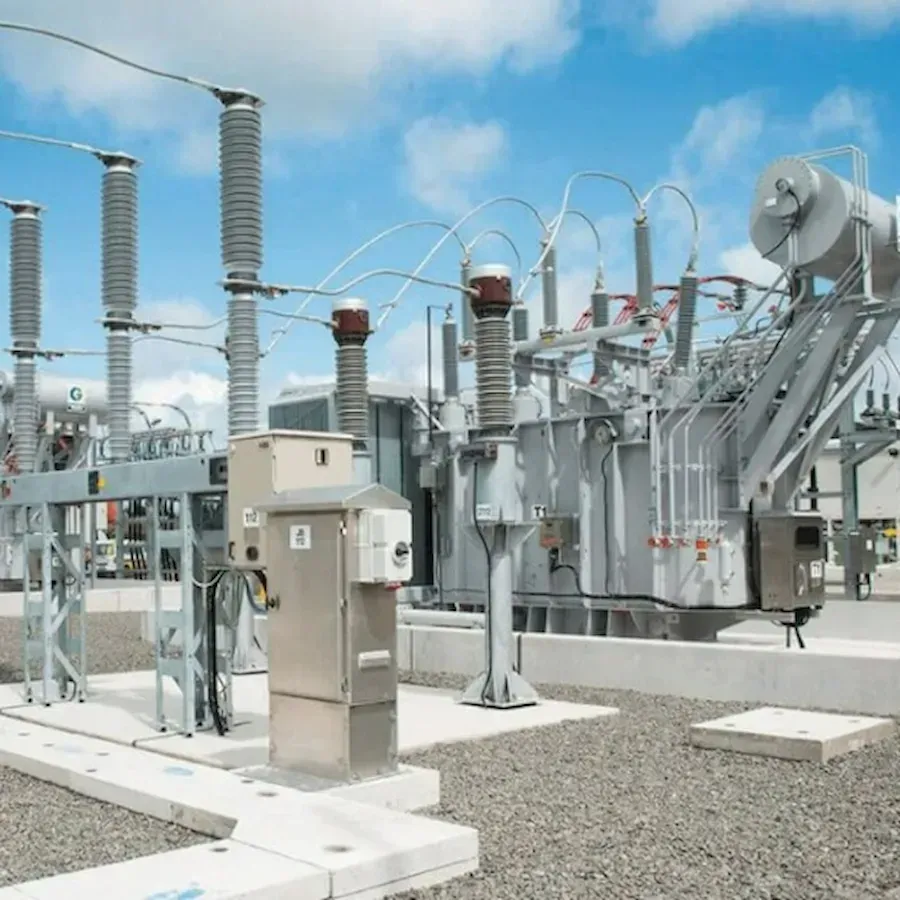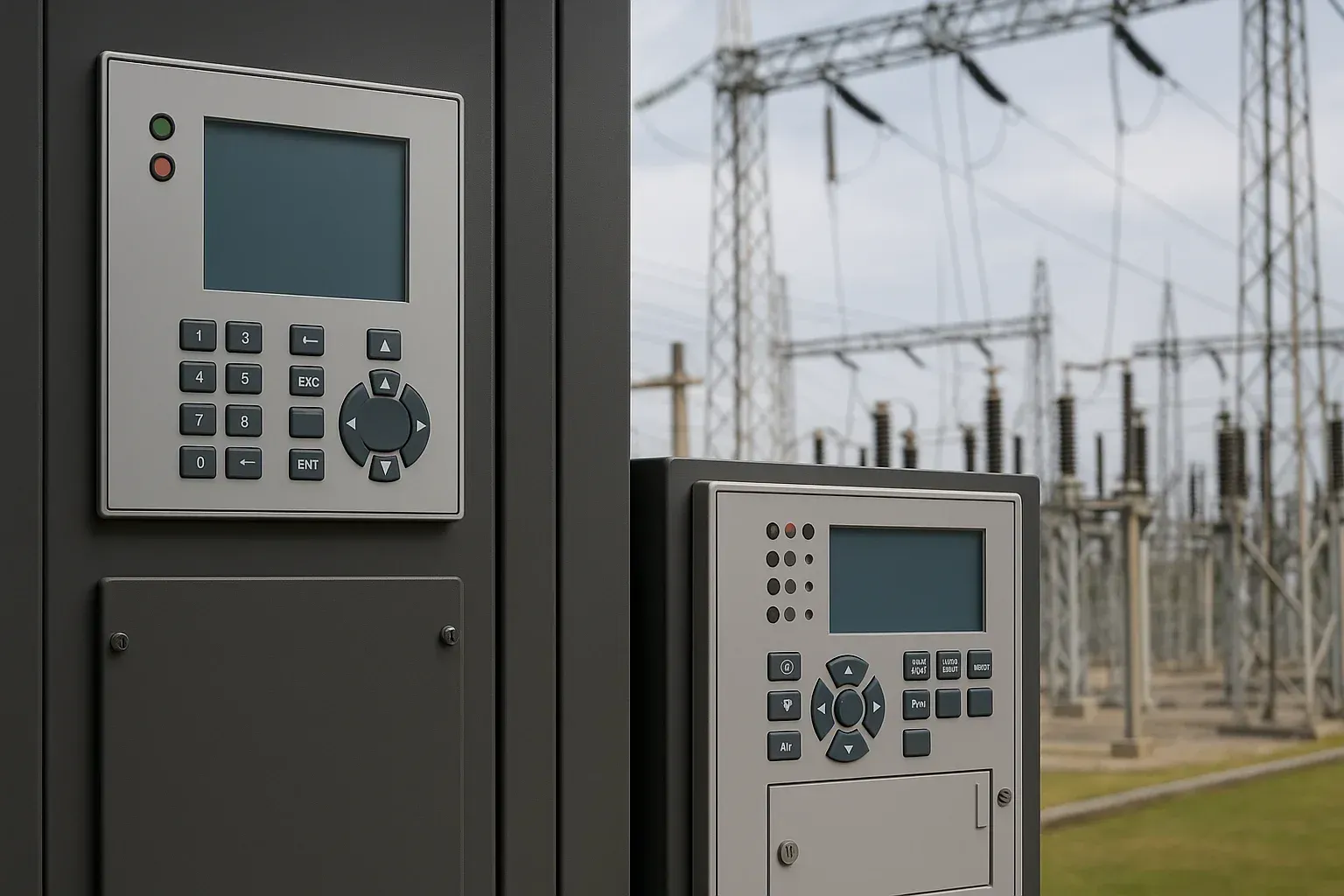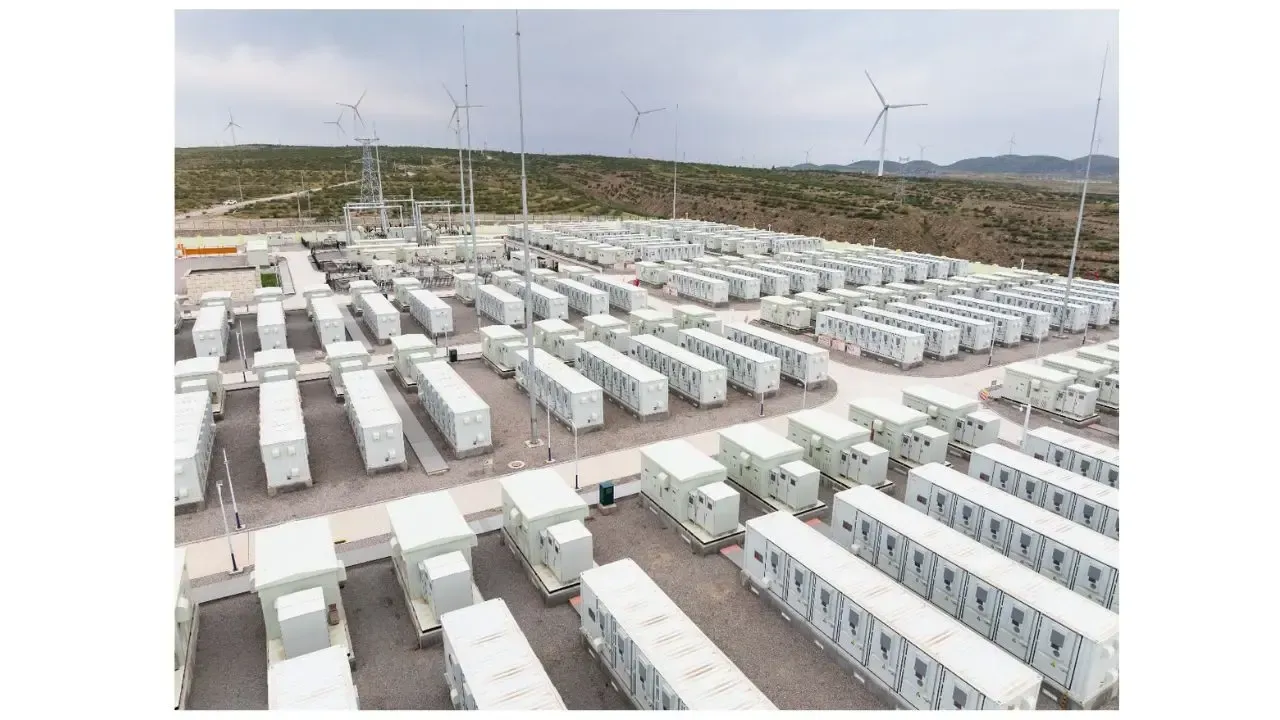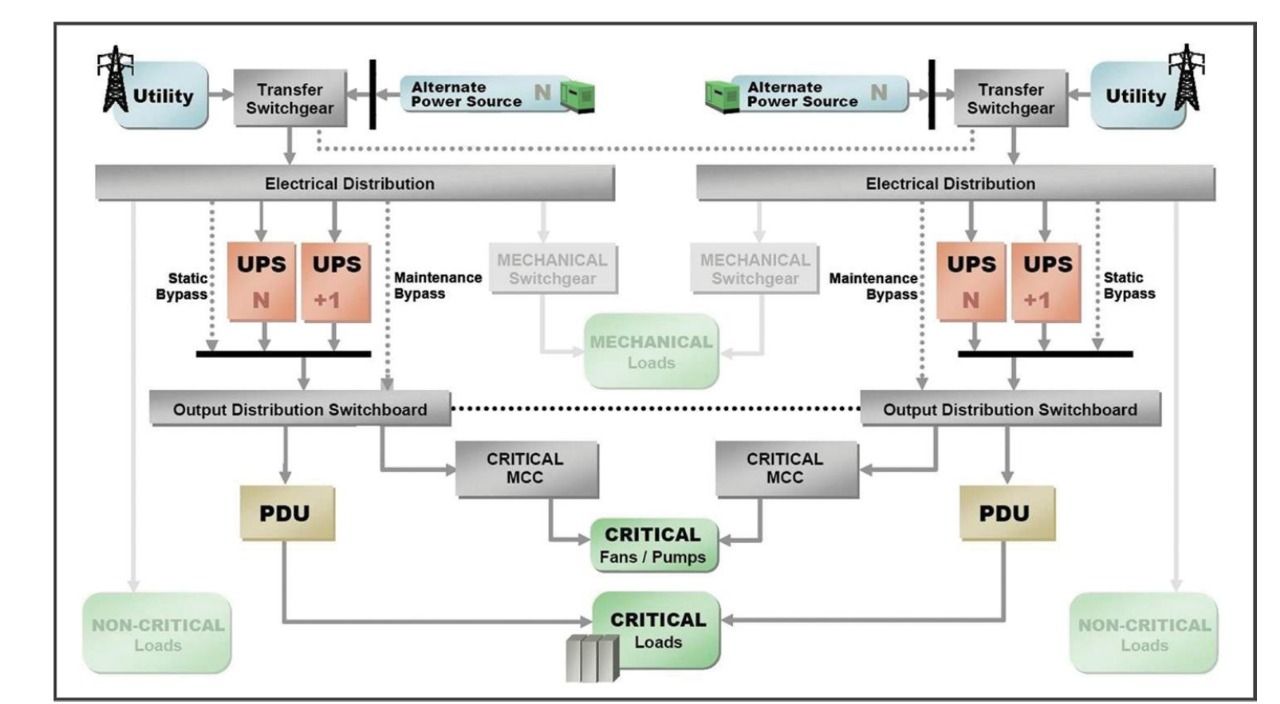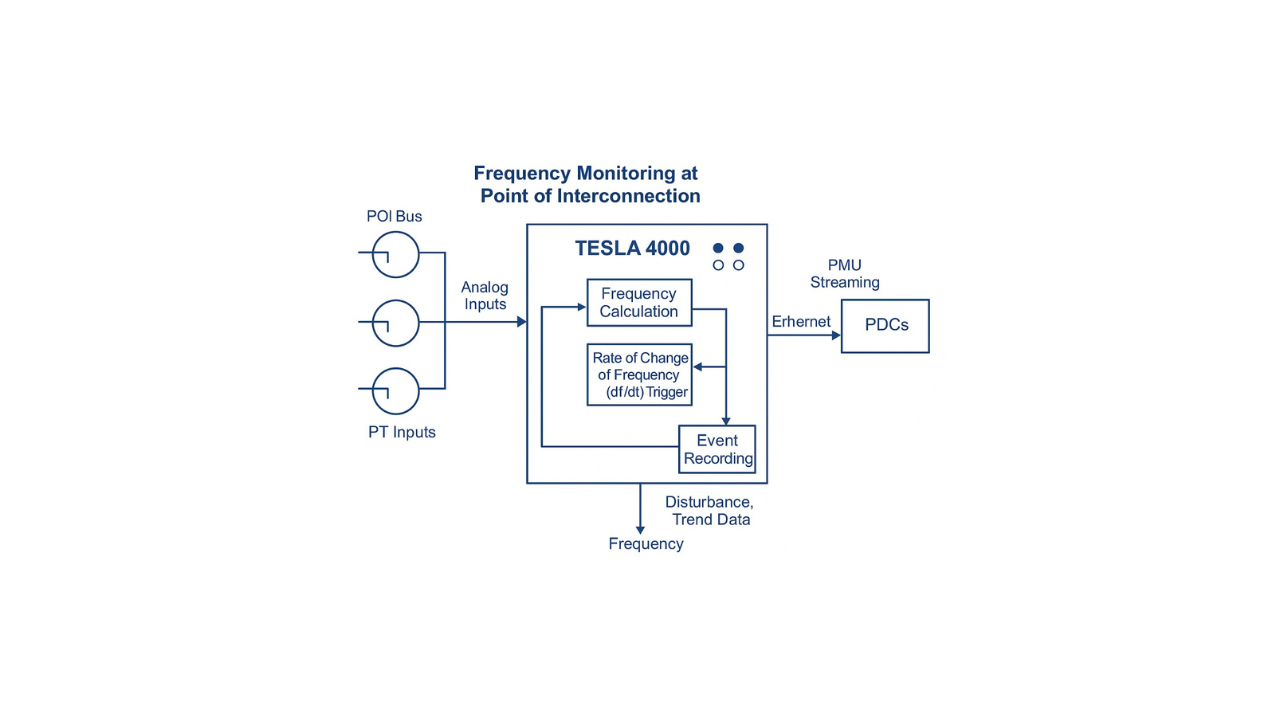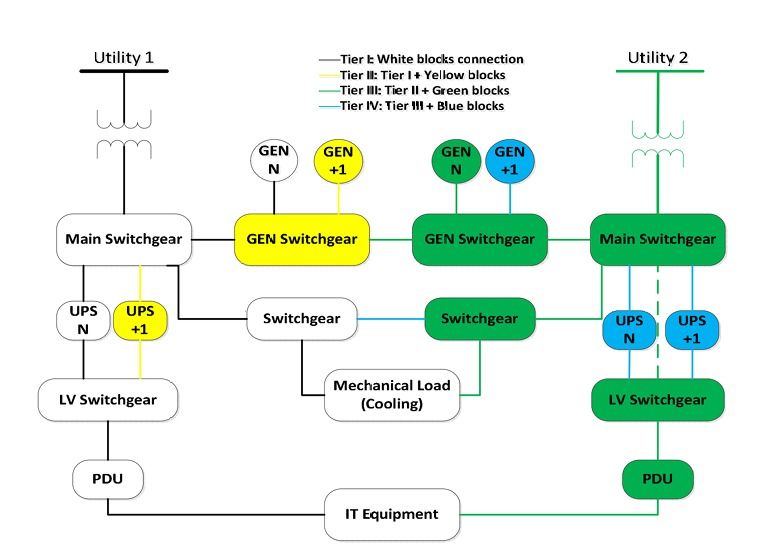A Coordinated Electric System Interconnection Review—the utility’s deep-dive on technical and cost impacts of your project.
Challenge: Frequent false tripping using conventional electromechanical relays
Solution: SEL-487E integration with multi-terminal differential protection and dynamic inrush restraint
Result: 90% reduction in false trips, saving over $250,000 in downtime
Advancing Power System Design Practices with IEEE PES TR 126
September 25, 2025 | Blog
Introduction: The Evolving Power Grid
The global power grid is undergoing one of the most transformative periods in its history. The integration of renewable energy, rapid electrification of transportation, and the decentralization of energy resources are reshaping the way engineers design and operate electrical infrastructure. Traditional design philosophies built on deterministic N-1 contingency planning are no longer sufficient to guarantee reliable and resilient operations. Instead, utilities, transmission owners, and developers must adopt new approaches that account for uncertainty, evolving standards, and emerging risks such as cyberattacks and geomagnetic disturbances (GMDs).
The IEEE PES Technical Report TR 126 – Power System Design Practices (PSDP) provides a comprehensive framework to meet these challenges. It synthesizes lessons learned from utilities, developers, and system operators, while aligning with IEEE standards (C37, C57, 1547, 2800) and NERC requirements (TPL, PRC, MOD, CIP). For Keentel Engineering, this report is both a roadmap and a validation of the design philosophy we apply in our projects: future-ready, compliance-driven, and resilience-focused.
Core Design Principles
Load Forecasting and Demand Analysis
Load forecasting is the foundation of all system planning. PES TR 126 stresses the need to go beyond simple historical trend extrapolation. With electrification and distributed resources creating nonlinear growth, planners must integrate:
- Short-term load forecasting for operational decisions.
- Long-term probabilistic scenarios to capture uncertainty in electric vehicle adoption, behind-the-meter solar, and industrial loads.
System Topology and Redundancy
A resilient topology balances cost and redundancy. IEEE PES TR 126 emphasizes moving from deterministic N-1 planning toward N-2 and probabilistic approaches.
- Ring bus and breaker-and-a-half schemes are recommended for critical substations.
- High-voltage (HV) corridors should be designed with parallel paths for redundancy.
Protection and Control Coordination
Protection remains a cornerstone of reliability. PSDP highlights:
- Selective coordination to ensure faults are cleared locally.
- Redundant zones of protection to maintain operation even under relay or breaker failure.
- IEC 61850-enabled relays for advanced communication and adaptive protection.
Our
power system studies approach captures uncertainty from EVs and BTM solar.
Integration of Inverter-Based Resources (IBRs)
Challenges with IBRs
Traditional synchronous machines provide system strength and fault current. IBRs, by contrast, have limited fault contribution and exhibit fast dynamic responses. Key challenges include:
- Low fault current leading to misoperation of overcurrent relays.
- Voltage ride-through capability per IEEE 2800.
- Reduced system inertia impacting transient stability.
The Need for EMT Studies
Phasor-domain tools such as PSS®E and PSLF cannot capture the fast inverter controls. PES TR 126 stresses the importance of EMT simulations (PSCAD, RTDS, PowerFactory EMT).
Learn more about
Advanced power system modeling guide
Reliability and Resilience
Beyond N-1: Probabilistic and Resilience Planning
The report expands reliability assessment from deterministic N-1 rules to probabilistic risk assessments (PRAs). Engineers must now quantify:
- Likelihood of multiple contingencies.
- Consequences of extreme events.
- System restoration strategies post-event.
Resilience Metrics
Resilience encompasses preparation, absorption, recovery, and adaptation. Metrics now include:
- Mean time to recovery (MTTR).
- System resilience index (SRI).
- Impact of black start resources and microgrids.
Standards and Compliance
Mapping PSDP to Standards
The report cross-references:
- IEEE C57.91 – Transformer loading guides.
- IEEE C37 series – Protection and control devices.
- IEEE 1547 / 2800 – DER and IBR interconnection requirements.
- NERC PRC-024, PRC-026, TPL-007 – Reliability and protection.
Emerging Tools and Methodologies
Digital Twins
PSDP highlights the role of digital twins – virtual replicas of power systems that simulate real-time dynamics. Benefits include:
- Predictive maintenance.
- Scenario testing under contingencies.
- Operator training.
Probabilistic Planning Tools
Beyond deterministic models, PSDP encourages Monte Carlo simulations and risk-based planning tools to capture real-world uncertainty.
Keentel Engineering’s Role
At Keentel, our philosophy mirrors the PSDP framework:
- Substation Design Excellence: From 69 kV to 500 kV, including GIS and AIS designs.
- Protection and Control: Relay coordination, redundant zones, IEC 61850 integration.
- Compliance Services: NERC study packages (PRC, TPL, MOD) across SPP, ERCOT, PJM, and CAISO.
- High-Fidelity Modeling: PSSE + TSAT for stability, PSCAD/RTDS for EMT validation.
- Resilience Consulting: GMD assessments, microgrid islanding, hurricane hardening.
This combination positions Keentel not just as a design firm, but as a strategic partner in grid modernization.
Conclusion
The power system of the future requires innovation grounded in standards and compliance. IEEE PES TR 126 challenges engineers to move beyond outdated deterministic rules and embrace probabilistic, resilience-focused, and compliance-driven design practices.For utilities, developers, and industrial clients, this means greater reliability, faster approvals, and reduced lifecycle costs. For Keentel Engineering, it reaffirms our commitment to delivering projects that are resilient, reliable, and regulation-ready.
IEEE PES TR 126 is a technical report on Power System Design Practices (PSDP) developed by the IEEE Power & Energy Society. It consolidates best practices in system planning, protection, and resilience while addressing challenges posed by inverter-based resources (IBRs), distributed energy resources (DERs), and evolving regulatory requirements. Unlike a prescriptive standard, TR 126 acts as a guidance document that connects practical design philosophies with compliance obligations such as NERC TPL, PRC, and MOD standards.
For engineers, it provides both deterministic and probabilistic frameworks to improve system reliability and resilience. For Keentel Engineering, this report reinforces our approach: delivering designs that meet today’s requirements while preparing clients for future challenges such as extreme weather, cyber threats, and high renewable penetration. By aligning PSDP principles with IEEE standards like C37 (protection), C57 (transformers), and 2800 (IBR performance), we ensure that every project is technically sound, compliant, and built for long-term operational stability.
Frequently Asked Questions – IEEE PES TR 126
1. Why is IEEE PES TR 126 important for modern power systems?
Traditional power system design relied heavily on synchronous generation, deterministic N-1 contingency planning, and steady load growth. However, the grid of today is facing nonlinear challenges: renewable variability, electrification of transportation, behind-the-meter solar, and cybersecurity threats. IEEE PES TR 126 is important because it modernizes design practices by incorporating probabilistic planning, IBR integration methods, and resilience metrics that account for extreme events. Utilities and developers who adopt these practices are better prepared to satisfy regulators, system operators, and investors who demand higher levels of reliability. From a compliance standpoint, PSDP also bridges the gap between engineering practice and regulatory frameworks, ensuring that designs not only function in theory but also meet required documentation for approvals. For Keentel Engineering, applying PSDP means we help our clients avoid costly re-studies, reduce outage risks, and strengthen infrastructure investments. In short, TR 126 is a roadmap for building a future-proof grid.
2. Who should apply PSDP principles?
PSDP principles are applicable across the entire power sector ecosystem. Transmission owners (TOs) and transmission operators (TOPs) use these practices to ensure network reliability under multiple contingencies. Generator owners (GOs), particularly those developing large-scale solar, wind, and BESS projects, rely on PSDP to prove compliance during interconnection studies. Distribution utilities benefit by adopting resilience-focused design, especially as DER penetration grows. Industrial customers with mission-critical loads (such as data centers or semiconductor plants) also benefit from PSDP-compliant designs, as they mitigate downtime risk.
Engineering consulting firms like Keentel Engineering serve as a bridge between PSDP guidance and client-specific projects, ensuring that design choices, simulations, and protection settings meet industry benchmarks. Regulators and reliability coordinators reference PSDP as a benchmark during audits or compliance reviews. In summary, PSDP is not just for engineers — it is a multi-stakeholder framework that improves outcomes for utilities, developers, regulators, and customers alike.
3. What is the role of load forecasting in PSDP?
Load forecasting forms the foundation of power system design. IEEE PES TR 126 emphasizes moving beyond simple historical demand trends toward probabilistic and scenario-based forecasts. This is critical because electrification trends (e.g., EV adoption) and distributed solar growth create nonlinear impacts on demand curves. PSDP advises using short-term forecasts for operational planning and long-term probabilistic scenarios to capture future uncertainty. For example, an urban load center may require modeling EV charging profiles at different penetration levels, while a rural system may need to account for agricultural electrification. At Keentel Engineering, we apply advanced forecasting tools and integrate socio-economic, weather, and policy variables into demand projections.
This ensures substation expansions, transmission upgrades, and renewable interconnections are sized correctly and future-proofed against demand shocks. Without accurate forecasting, utilities risk under-building (leading to overloads and outages) or overbuilding (leading to stranded assets). PSDP mitigates both risks by aligning forecasts with robust planning strategies.
4. How does PSDP address redundancy?
Redundancy is central to ensuring reliability, especially under contingency scenarios. Traditional design has long relied on the N-1 criterion, meaning the system should withstand the loss of a single element. PSDP builds on this by encouraging N-2 contingency assessments and probabilistic risk-based planning. Instead of assuming equal probability for all contingencies, it prioritizes design investments based on likelihood and impact. For example, a 500 kV corridor may require parallel transmission paths, while a substation serving critical infrastructure may use breaker-and-a-half or ring bus configurations to avoid total outages. PSDP also integrates redundancy into protection schemes, recommending duplicate zones of protection and backup relays. Keentel Engineering implements redundancy as a layered defense: from transmission paths down to relay coordination. This ensures that even if a component or protection layer fails, the system remains stable. Redundancy is not simply extra equipment — it is a strategic design philosophy woven into the PSDP framework.
5. What is the difference between deterministic and probabilistic planning?
Deterministic planning applies fixed contingency rules (such as N-1) without considering probabilities. For decades, this approach provided a simple, reliable framework. However, it fails to capture the complexity of modern grids, where multiple contingencies, weather-driven events, and DER variability can occur simultaneously. Probabilistic planning, as emphasized in PSDP, considers both the likelihood and consequence of events. This allows engineers to prioritize investments where they have the most reliability impact.
For example, losing a single transmission line in a high-wind corridor may be more likely than losing a rarely used tie-line, even if both technically count as N-1 scenarios. By applying probabilistic planning, utilities allocate resources more efficiently, improving resilience without overbuilding. Keentel Engineering leverages Monte Carlo simulations and scenario analysis to quantify risks. This enables our clients to balance cost, compliance, and reliability, moving beyond one-size-fits-all design. Deterministic ensures basic reliability, while probabilistic ensures real-world resilience.
6. What challenges do inverter-based resources (IBRs) introduce to system protection?
IBRs such as solar PV, wind, and battery storage present unique protection challenges. Unlike synchronous machines, IBRs contribute limited fault current, making it difficult for traditional overcurrent relays to detect faults. They also trip faster under abnormal conditions, sometimes before system protection operates, causing coordination issues. Additionally, IBR controllers can behave differently under grid-following vs. grid-forming modes, leading to unpredictable responses. PSDP stresses the need to re-evaluate protection strategies in IBR-heavy systems, including the use of:
- Advanced relay algorithms that detect voltage and frequency anomalies.
- Redundant zones of protection to catch low-fault scenarios.
- EMT simulations to capture dynamic inverter responses.
At Keentel, we integrate IBR modeling into both phasor-domain (PSS®E, PSLF) and time-domain EMT (PSCAD, RTDS) studies. This dual approach ensures that protection settings are valid under both steady-state and fast transient conditions. Without such studies, utilities risk false trips or failure-to-trip scenarios, undermining system reliability.
7. Why are EMT studies required in modern power systems?
Electromagnetic Transient (EMT) studies are essential when integrating IBRs and fast-acting controls into the grid. Traditional phasor-domain tools (PSS®E, PSLF) assume sinusoidal steady-state behavior, which works for synchronous machines but fails to capture millisecond-level inverter dynamics. EMT simulations model high-frequency control loops, harmonic interactions, and fast protection responses. IEEE PES TR 126 stresses EMT as a mandatory tool for IBR interconnections, especially when IBR penetration exceeds certain thresholds. For example, EMT can reveal instability caused by multiple inverters interacting, which phasor tools cannot.
Regulators such as ERCOT, CAISO, and PJM increasingly require EMT validation before granting interconnection approval. At Keentel Engineering, we use PSCAD/EMTDC and RTDS platforms to conduct EMT analyses, helping clients prove compliance while avoiding costly delays. In short, EMT studies provide the high-fidelity lens needed to ensure system stability in today’s inverter-dominated environment.
8. What standards govern IBR interconnection?
The two most critical standards for IBR interconnection are IEEE 1547 and IEEE 2800. IEEE 1547 applies primarily to distributed energy resources (DERs) at the distribution level, setting requirements for voltage and frequency ride-through, reactive power support, and interoperability. IEEE 2800, by contrast, governs large-scale inverter-based resources (utility-scale solar, wind, BESS) connecting to the bulk power system. It establishes strict performance requirements for frequency support, voltage response, and fault ride-through. Beyond IEEE, NERC standards such as PRC-024 (ride-through), PRC-026 (relay coordination with IBRs), and TPL standards for planning also apply.
PSDP integrates these standards into a coherent framework, guiding engineers on how to align interconnection studies with compliance needs. At Keentel, we specialize in navigating these overlapping requirements. Our interconnection packages for PJM, ERCOT, and CAISO explicitly map IBR designs to IEEE and NERC compliance checklists, ensuring projects clear regulatory hurdles without re-study risks.
IEEE PES TR 126 Design Support
Adapting to IEEE PES TR 126 requires more than simply updating design methods—it means adopting probabilistic planning, resilience metrics, and compliance alignment across NERC and IEEE standards. At Keentel Engineering, we integrate advanced modeling, substation design, and compliance expertise to help utilities, developers, and industrial clients apply PSDP principles with confidence.
👉 Explore our
Power System Studies and
NERC Compliance Services, or learn more about
Substation Design tailored for future-ready grids.

About the Author:
Sonny Patel P.E. EC
IEEE Senior Member
In 1995, Sandip (Sonny) R. Patel earned his Electrical Engineering degree from the University of Illinois, specializing in Electrical Engineering . But degrees don’t build legacies—action does. For three decades, he’s been shaping the future of engineering, not just as a licensed Professional Engineer across multiple states (Florida, California, New York, West Virginia, and Minnesota), but as a doer. A builder. A leader. Not just an engineer. A Licensed Electrical Contractor in Florida with an Unlimited EC license. Not just an executive. The founder and CEO of KEENTEL LLC—where expertise meets execution. Three decades. Multiple states. Endless impact.
Services

Let's Discuss Your Project
Let's book a call to discuss your electrical engineering project that we can help you with.

About the Author:
Sonny Patel P.E. EC
IEEE Senior Member
In 1995, Sandip (Sonny) R. Patel earned his Electrical Engineering degree from the University of Illinois, specializing in Electrical Engineering . But degrees don’t build legacies—action does. For three decades, he’s been shaping the future of engineering, not just as a licensed Professional Engineer across multiple states (Florida, California, New York, West Virginia, and Minnesota), but as a doer. A builder. A leader. Not just an engineer. A Licensed Electrical Contractor in Florida with an Unlimited EC license. Not just an executive. The founder and CEO of KEENTEL LLC—where expertise meets execution. Three decades. Multiple states. Endless impact.
Leave a Comment
We will get back to you as soon as possible.
Please try again later.
Related Posts


